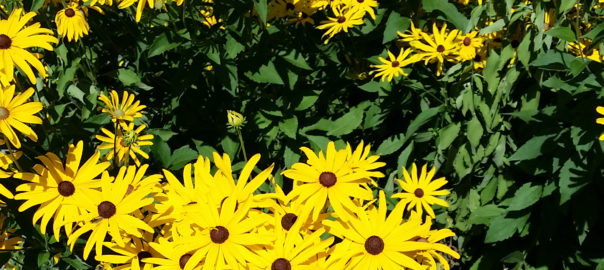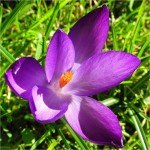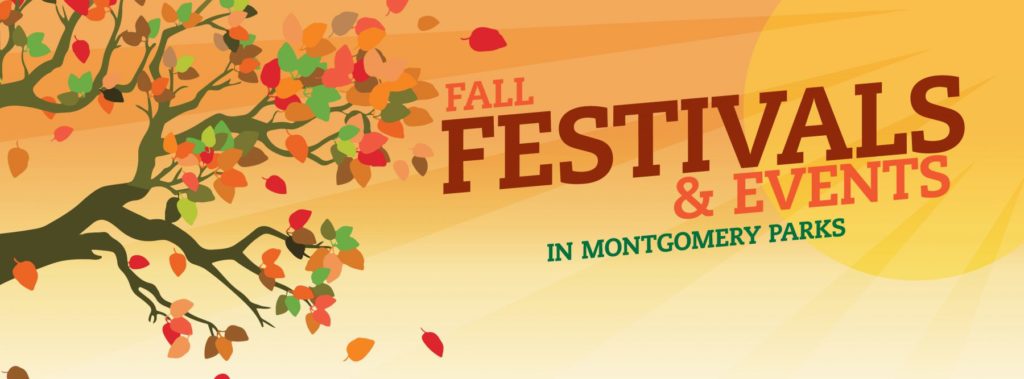Hello Friends, Neighbors, Fellow Gardeners,
The weather is finally getting cooler and fall will be starting this month! It’s time to enjoy  the fall harvest of apples and pumpkins! Here are some gardening tips, educational opportunities, and events for September. Events include the Pawpaw Festival at Meadowside Nature Center, Friends of Brookside Garden’s 20th Anniversary Plant Sale, Children’s Day: Honey Harvest Festival, Monarch Fiesta at Black Hill Visitor Center, Bluegrass on the Farm at Agricultural History Farm Park, Apple Festival and Campfire at Meadowside Nature Center, and our special Community Event on Tuesday, September 27th featuring the “Growing Legacy” award-winning film on Montgomery County’s Agricultural Reserve with special guest speakers from the Montgomery Countryside Alliance!
the fall harvest of apples and pumpkins! Here are some gardening tips, educational opportunities, and events for September. Events include the Pawpaw Festival at Meadowside Nature Center, Friends of Brookside Garden’s 20th Anniversary Plant Sale, Children’s Day: Honey Harvest Festival, Monarch Fiesta at Black Hill Visitor Center, Bluegrass on the Farm at Agricultural History Farm Park, Apple Festival and Campfire at Meadowside Nature Center, and our special Community Event on Tuesday, September 27th featuring the “Growing Legacy” award-winning film on Montgomery County’s Agricultural Reserve with special guest speakers from the Montgomery Countryside Alliance!
Planning:
- Check your local garden center for end-of-summer bargains.
- Order spring-flowering bulbs to arrive for planting this fall.
- Keep an eye out for the first frost date. In Zone 6, it is expected between September 30 and October 30. In Zone 7, it is predicted to be between October 15 and November 15.
- Attend a local garden club meeting or plant exchange.
- Set aside a few hours each weekend for attending garden shows and tours. | DC Gardens
- Go on a local house or garden tour to see what plants are thriving in other’s area home gardens: http://www.visitmaryland.org/list/gardens-maryland
- Begin replanting pots with hardy annuals.
- Plant hardy mums and fall season annuals.
- Start bulb plantings of early spring bloomers at the end of the month.
- Divide and transplant perennials, in particular, peony and iris.
- Asters are deer-resistant and bloom around the end of September.
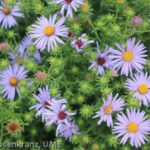
- (Article and photo by Ginny Rosenkranz, UMD Extension) https://extension.umd.edu/…/landscape-manage…/new-york-aster
- Plant newly purchased plants.
- Continue to deadhead.
- Divide ornamental grass.
- Remove spent annuals replacing with fall annuals. Water deeply.
- Dig up bulbs from your Gladiolus, Canna, Caladiums, and other tender bulbs; cut off foliage; let dry for a week; and store for the winter.
- Cut fully yellow lily stalks.
- Look out for any Poison Ivy vines, which will turn crimson in the fall and be easy to distinguish between other vines.
- Fertilize established bulb beds in the end of the month.
- Pests to watch for: Aphids, spidermites, whiteflies
- Diseases to watch for: powdery mildew, fungal leaf spot
- See UMD’s HGIC’s September Flower tips for more details.
Trees and Shrubs:
- Fertilize if necessary for last time.
- Avoid late summer pruning.
- Remove fallen, diseased leaves.
- Mulch or compost healthy leaves.
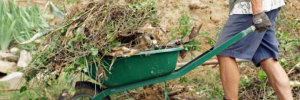
- Transplant trees and shrubs.
- If your conifers start shedding their needles, don’t worry. This is normal for our autumn cycle.
- Plant evergreens for winter interest.
- Water slowly and deeply if summer is very dry.
- Pests to watch for: sawfly, adelgids, webworm, spidermites, leafminers, caterpillars, scale, aphids, borers, and bagworms.
- Diseases to watch for: Powdery mildew.
- See HGIC’s September Trees and Shrubs Tips for more details.
Herbs, Veggies, and Fruit:
- The first week in September is the last week to plant lettuce in an open garden.
- The third week in September is the last week to plant radishes in an open garden.
- Remove rotting fruits from fruit trees and compost them.

- Continue planting cool-season vegetables (turnips, carrots, beets, broccoli, Brussel sprouts, Chinese cabbage, cauliflower, kale, lettuce, mustard, radish, and spinach ).
-
Mid-Atlantic Gardener · Enjoy these great vegetable gardening tips
-
- Plant garlic now through the end of October.
- Pick mature tomatoes and peppers to ripen in your window sills.
- Watch your pumpkins/squash. Harvest them when their rinds are dull and hard.
- Pick apples at a local pick-your-own farm or visit a local farmer’s market.
- Cut herbs and flowers for drying indoors.
- Pot up rosemary and chives for over-wintering indoors.
- Video: How to Grow Microgreens: A Beginner’s 101 Guide | Gardening Channel

- Plant cover crops in vegetable gardens and annual beds (for example, rye, clover, hairy fetch, and winter peas).
- Plant strawberries in a site with good drainage for harvest next spring.
- This is a good time to have your vegetable garden and landscape soils tested.
- Look out for slug eggs grouped under sticks and stones. They are the size of BBs and pale in color.
- Pests to watch for: Squash vine borer, slugs.
- Diseases to watch for: Powdery mildew, fungal, bacterial, viral diseases.
- Here are some more fruit and vegetable gardening tips for September from UMD’s HGIC.
Lawns:
- Labor Day weekend — the perfect time for seeding the lawn.
- Apply fertilizer and lime to turfgrass based on soil tests and UME recommendations.
- Watch the video to learn how to collect a soil

- Over seeding may be done now through October.
- Keep newly-seeded lawns well watered!
Lawn Renovation | University of Maryland Extension
- Plug aerate when soil is moist.
- Begin mowing leaves into turf to add organic matter and nutrients.
- Fertilize tall fescue and bluegrass with 1 lb. Nitrogen per 1000 square feet.
- Check for mosquito breeding grounds. Dump out any water that sits stagnant for more than three days.
- Cool season lawns go dormant in hot, dry weather – Do Not Water.
- Turn your compost pile weekly and don’t let it dry out. Work compost into your planting beds.
- Diseases to watch for: dollar spot, brown patch and red thread
- Pests to watch for: Grubs
- See HGIC’s September Lawn Tips for more details.
Indoors/Houseplants:
- Bring in tender plants before night temperatures dip to 60 degrees.
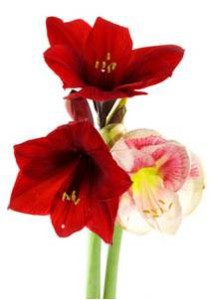
- Bring Amaryllis indoors before a hard freeze. Repot every other year at this time. Store in a cool, dark place and do not water until flower buds or leaves emerge.
- Take cuttings of plants you want to overwinter inside and place in water.
- Begin conditioning the Christmas cactus and poinsettias to get them ready for the holiday season.
- Monitor for insect problems.
- Pests to watch for: Spidermites, mealybug, scale, aphids, squirrels, whitefly
- See HGIC’s September Houseplants Tips for more tips.
Indoor/Outdoor Insect and Wildlife Tips:
- Leave hummingbird feeders out until October 15.
- Start feeding birds to get them in the habit for this winter.
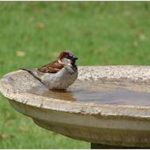
- Keep birdfeeders and baths cleaned and replenished. Change water frequently to avoid mosquitoes.
- See HGIC’s September Insect Tips for more details.
- Watch for: rabbits, groundhogs, deer, moles, snakes, squirrels, and voles.
- For more information on wildlife management and attracting wildlife see HGIC’s September Wildlife tips.
Source: University of Maryland’s Home and Garden Information Center (HGIC) and the Washington Gardener.
September
See below for upcoming local events in September.
Montgomery Parks Special Events & Festivals
More events are being added regularly. Please check back often!
Additional information on Fall Festivals: Montgomery Parks Announces 2016 Fall Festivals
![]() Save the date for these upcoming Fall events! Events include the Pawpaw Festival at Meadowside Nature Center, Friends of Brookside Garden’s 20th Anniversary Plant Sale, Children’s Day: Honey Harvest Festival, Monarch Fiesta at Black Hill Visitor Center, Bluegrass on the Farm at Agricultural History Farm Park, and the Apple Festival and Campfire at Meadowside Nature Center!
Save the date for these upcoming Fall events! Events include the Pawpaw Festival at Meadowside Nature Center, Friends of Brookside Garden’s 20th Anniversary Plant Sale, Children’s Day: Honey Harvest Festival, Monarch Fiesta at Black Hill Visitor Center, Bluegrass on the Farm at Agricultural History Farm Park, and the Apple Festival and Campfire at Meadowside Nature Center!
Wings of Fancy
Wednesday, April 27 – Sunday, September 25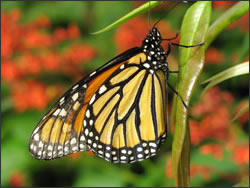
10 a.m.-4:00 p.m. | Brookside Gardens, Wheaton
$8 ages 13 and up | $5 ages 3-12 | Free ages 0-2
Brookside Gardens is happy to announce the return of its premier Wings of Fancy Live Butterfly and Caterpillar Exhibit. The seasonal display features hundreds of live butterflies from all over the world. Families, students, nature lovers, and everyone in between can get an up close experience of these brilliant butterflies from North America, Costa Rica, Africa and Asia as they soar among colorful flowers. Visitors can learn about their amazing metamorphosis, the important role butterflies play in having healthy ecosystems, and how to ensure these beautiful insects thrive in our own gardens.
Winter Wonders – Winter Squash cooking demo class
Monday, October 17, 12:00-1:30pm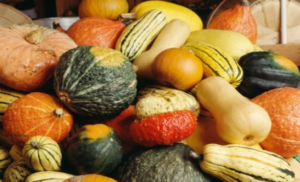
1800 Glenallan Avenue
Wheaton, MD 20902
Adrienne Cook, Garden and Cooking Writer
Danielle Cook, Holistic Nutritionist and Cooking Instructor
Those hard-shelled beauties of all color and shape – is one of the great comfort foods of fall and winter. Whether you go for pumpkins, butternut, acorn, delicata or any of the myriad varieties, Let The Cook Sisters show you new ways to prepare the delicious meat of these meaty vegetables. Sample three new recipes and enjoy a short presentation on the botany of squashes and how to grow them from a Brookside Gardens staffer.
Course # 23603
Fee: $35 FOBG: $31; registration required
Visitors Center Auditorium
2016 Trees Matter Symposium
Wednesday, October 19, 7:30am-4:00pm
Silver Spring Civic Center, Silver Spring, MD
Take advantage of our early bird registration from July 18th until September 17th only $75 (regular rate $90).
Montgomery Parks, a leader in urban arboriculture and landscaping hosts its 5th Annual Trees Matter Symposium. Learn from respected industry professionals about the most recent and innovative trends in urban and suburban landscaping while connecting with colleagues.
The fifth annual Trees Matter Symposium focuses on the health and welfare of trees in our increasingly developed landscapes. Learn from some of the country’s leading experts about innovative efforts to plant, protect and preserve trees in urban and suburban settings.
Trees provide many benefits: they cleanse and cool our air, stabilize our soils, provide wildlife habitat and beautify our urban and suburban areas. We encourage all arborists, landscape industry and environmental/green industry professionals, engineers, designers, housing developers and interested citizens to take advantage of this opportunity to learn new techniques and concepts on what can be done to ensure the survival of trees in our built environment.
